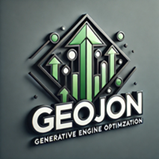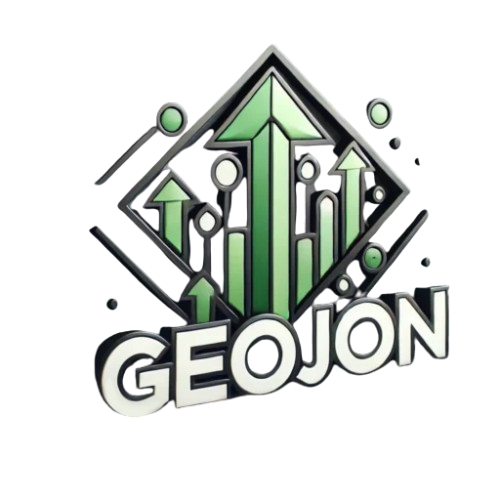
(Estimated Reading Time: 20-25 minutes)
What’s Covered in This Guide:
The New Search Paradigm
Core Principles of Generative Engine Optimization (GEO)
- Crafting Content for ChatGPT Search
- Technical Recommendations for Enhanced Visibility
- Leveraging AI Tools and Automation for GEO
- Measuring Success in Generative Engine Optimization
- Future Trends and Predictions in Generative Engine Optimization
- Conclusion
- Additional Resources and References
The organic search landscape is rapidly evolving, driven by the rise of AI-powered search engines that are looking to compete with Google, such as the new and wildly popular ChatGPT Search. These generative AI engines have profoundly transformed how brands need to approach content optimization and their organic search strategies. Unlike traditional search engines that rely heavily on keyword indexing and backlinks, ChatGPT Search uses large language models (LLMs) to understand user intent, generate responses, and deliver personalized content.
This shift in search behavior demands a new set of skills and strategies from marketing teams aiming to stay visible and relevant in the AI-driven future. Understanding Generative Engine Optimization (GEO) is crucial for maintaining visibility and engagement in this advanced search environment. This guide offers actionable strategies for digital marketers and SEO specialists to optimize content and achieve higher visibility in ChatGPT Search, ensuring brand prominence in AI-generated responses.
First Look at the New ChatGPT Search
ChatGPT Search marks a significant departure from traditional search engines. Instead of indexing web pages and ranking them based on keywords, it leverages AI to interpret user queries, generating highly contextual and conversational responses. The emphasis is on delivering nuanced, personalized answers rather than directing users to a list of web pages.
Key characteristics of ChatGPT Search:
- Focus on intent and context: Rather than relying on direct keyword matching, the AI analyzes the deeper intent behind the user’s question.
- Natural language comprehension: ChatGPT is designed to understand colloquial language, idiomatic expressions, and complex sentence structures, making it more adept at engaging in human-like conversations.
- Continuous learning: The AI is constantly updated with new information, making content freshness and relevance a key factor.
Key Differences from Google/Bing SEO and ChatGPT Search

Traditional SEO strategies revolve around factors like backlinks, meta tags, and keyword density. In contrast, ChatGPT Search optimizes for:
- Content relevance and context: High-ranking content in ChatGPT Search focuses on answering user questions comprehensively and conversationally.
- Entity recognition and topic authority: AI prioritizes authoritative content sources and brands recognized as thought leaders.
- Conversational language: The more natural and engaging the content, the higher the likelihood of being featured in ChatGPT responses.
The Impact on Brand Visibility
To remain visible in this new search environment, brands must adapt their strategies. Early adopters like HubSpot and IBM have already leveraged AI optimization for content discovery. By focusing on authoritative, intent-driven content, these companies have secured top visibility in generative search outputs.
Tactical Steps:
- Conduct an audit of existing content to identify gaps in conversational tone and context alignment.
- Create a content calendar focused on emerging trends, ensuring your brand stays relevant.
- Use AI monitoring tools (e.g., ChatGPT Plugins) to track your content’s visibility in generative search engines.
Core Principles of Generative Engine Optimization (GEO)

Focus on Content Authority and Trustworthiness
The concept of E-E-A-T (Experience, Expertise, Authoritativeness, Trustworthiness) is still critical, but its application in ChatGPT Search has evolved. The AI is designed to prioritize content that reflects authoritative voices, credible data, and expert knowledge.
Strategies for Enhancing Content Authority:
- Leverage proprietary data: Use internal case studies, research reports, and unique insights to strengthen content authority.
- Include expert quotes and references: Collaborate with industry experts to lend credibility to your content.
- Optimize author profiles: Ensure that content creators’ credentials are visible, highlighting their expertise.
Real-World Example: Salesforce consistently publishes authoritative reports on CRM trends, making it a go-to source in generative AI responses for enterprise solutions.
The Role of Context and Conversational Relevance
ChatGPT excels in delivering content that aligns with the user’s query context. To rank higher, brands must adopt a conversational tone that mimics natural dialogue. This includes:
- Anticipating follow-up questions: Write content that addresses potential related queries, enhancing the likelihood of your content appearing in ChatGPT’s follow-up suggestions.
- Incorporating user-centric language: Use terms and phrases your target audience uses in everyday conversations.
Actionable Tip: Develop FAQ sections on your website to capture high-intent, conversational queries.
The Importance of Content Freshness
ChatGPT relies on the most up-to-date information available in its knowledge base. Regularly updating your content is essential for maintaining visibility.
Tactical Steps:
- Set up content refresh alerts using tools like Semrush to identify outdated pages.
- Repurpose older content into new formats (e.g., videos, infographics) to maintain relevance.
- Monitor trending topics and quickly produce content on emerging subjects.
Crafting Content for ChatGPT Search
Creating Content Tailored for User Intent
Understanding user personas and their interaction with generative search engines is essential. By optimizing for high-intent questions, marketers can align their content with what ChatGPT users seek.
Tactical Steps:
- Use tools like AnswerThePublic to discover common questions your target audience asks.
- Develop pillar content that addresses comprehensive topics while linking to more granular subtopics.
Leveraging Long-Form Content and Deep Dives
In-depth content (2,000+ words) is often favored by ChatGPT for comprehensive answers. However, it’s crucial to structure content in a way that makes it easy for the AI to extract concise answers.
Best Practices:
- Use section headers and bullet points to enhance content readability.
- Focus on problem-solving content that directly addresses pain points of your audience.
Optimizing for Conversational Keywords
The shift from short-tail to long-tail conversational queries is crucial. Tools like Ahrefs and Frase can help identify these queries. Aim to optimize for questions, comparisons, and exploratory queries.
Utilizing Structured Content for Enhanced Visibility
Properly structuring content helps AI models like ChatGPT understand your content better:
- Use structured lists (numbered or bulleted) to break down complex information.
- Optimize for schema markup to enhance contextual relevance.
Technical Recommendations for Enhanced Visibility
Leveraging Structured Data and Semantic Markup
Structured data (e.g., schema.org) helps ChatGPT understand the context of your content, improving visibility in AI-driven responses.
Actionable Tip: Use structured data to highlight FAQs, how-tos, and product details to improve the chances of appearing in featured answers.
Enhancing API Integrations for Content Delivery
Preparing content for API integrations with OpenAI and other platforms can ensure that your content feeds directly into ChatGPT’s responses.
Examples:
- Companies like Bloomberg use APIs to provide real-time data, ensuring their content remains relevant and visible.
- Consider creating a content API for your own website to push updates seamlessly to various platforms.
Improving Page Speed and Mobile Optimization
Although ChatGPT Search is less focused on traditional SEO metrics, site performance still impacts user engagement.
- Optimize your site for mobile responsiveness to ensure users have a seamless experience across devices.
- Use CDNs (Content Delivery Networks) and image optimization to boost load times.
Measuring Success in Generative Engine Optimization
New Metrics for Evaluating Performance
Unlike traditional search engines, ChatGPT Search metrics focus more on engagement and interaction rather than just click-through rates. Consider tracking:
- Response rate: How often your content appears in ChatGPT answers.
- User interaction rates: Measure how often users engage with your content after being directed to your site.
- Content satisfaction: Monitor feedback from AI-driven interactions to refine content.
Tools for Tracking Visibility in ChatGPT Search
While traditional tools like Google Analytics are still useful, you’ll need additional tools to monitor your visibility in generative search:
- OpenAI Playground: Experiment with prompts to see how your content is interpreted.
- ChatGPT Plugins: Use these to gain insights into how your content is utilized by AI.
Future Trends and Predictions in Generative Engine Optimization
The Future of AI-Powered Search Engines
Generative search engines will continue to evolve, incorporating voice search, personalization, and predictive analytics. Preparing your content for these advancements is crucial.
Preparing for a Cookieless Future and Privacy Concerns
As privacy regulations tighten, leveraging first-party data and prioritizing transparency in data collection will be essential for maintaining user trust.
Conclusion
Summary of Key Takeaways
Optimizing for ChatGPT Search requires a deep understanding of generative engine principles. Brands should focus on content authority, conversational relevance, and user intent to maintain visibility in AI-driven environments.
Technical Recommendations for Enhanced Visibility

- Leveraging Structured Data and Semantic Markup
Structured data (e.g., schema.org) helps ChatGPT understand the context of your content, improving visibility in AI-driven responses.
Actionable Tip:
Use structured data to highlight FAQs, how-tos, and product details to improve the chances of appearing in featured answers.
Optimizing for Voice Search and Conversational AI
As ChatGPT Search evolves, it increasingly aligns with voice search capabilities. Optimizing content for voice search ensures your brand remains discoverable as users interact with AI assistants.
Actionable Tips:
- Structure content in a Q&A format, with concise, conversational answers that match how users speak.
- Optimize for long-tail, question-based keywords (e.g., “What’s the best CRM software for enterprises?”).
- Use tools like AnswerThePublic to identify common spoken queries in your niche.
Implementing Natural Language Processing (NLP) Optimization
To rank higher in ChatGPT Search, focus on optimizing content for NLP algorithms. ChatGPT is designed to understand nuances in language, so aligning your content with its NLP capabilities can boost visibility.
Tactical Steps:
- Use latent semantic indexing (LSI) keywords to enhance content relevance without keyword stuffing.
- Write content that mimics natural language by using conversational phrases and varying sentence structures.
- Tools like Frase and MarketMuse can analyze your content’s semantic relevance and suggest improvements.
Next Steps: Now is the time for marketing teams to implement GEO strategies and secure a strong foothold in the evolving search landscape.
Search
Recent Posts
ChatGPT Search Goes Account-Free: The Future of
- February 7, 2025
- 13 min read
Strategies to Dominate Consumer Searches with AI
- January 13, 2025
- 15 min read
Boost Visibility: Integrate GEO with SEO Strategies
- January 6, 2025
- 6 min read









